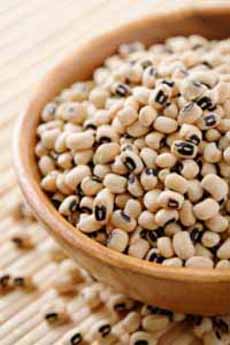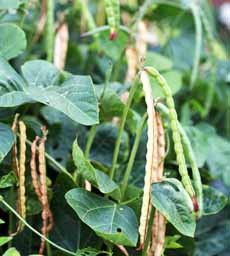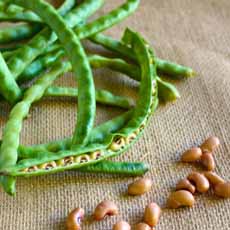TIP OF THE DAY: Black-Eyed Peas For New Year’s Day
|
In the American South, a New Year’s Day meal of black-eyed peas and greens, such as collards, is considered good luck. The peas symbolize coins and the greens symbolize paper money. A dish that combines both is the popular beans-and-rice combination, Hoppin’ John. Other favorites are black-eyed peas and ham, the peas often combined with collards (photo #3). The custom is actually a lot older than the U.S., and began in the Middle East. Here’s the history of black-eyed peas as a good-luck food. (Here are more foods that symbolize good luck.) Some black-eyed peas trivia from the Library of Congress: Black-eyed peas are clearly beans, so why are they called peas? Both peas and beans are both legumes with edible seeds. Each a separate genus in the Fabaceae botanical family. Some key differences: Back to why black-eyed peas are called beans: Bean is a term loosely applied to any legume whose seeds or pods are eaten. Black-eyed peas are in the bean genus, not the pea genus; but in the old days, most farmers didn’t know the difference. Other beans popularly called “peas” are the chickpea and the pigeon pea. There are endless recipes online; typically sides (with or without greens), green salads and bean salads. |
[3] In and out of the pod (photo courtesy Cheryl D. Lee | Zester Daily). |
|
|
WHAT ABOUT THOSE MUSICIANS? If you search for “black-eyed peas” online, the first zillion pages are for the music group called Black Eyed Peas (no hyphen). We like the group, but they cause us to refine our search to black-eyed peas bean, food, etc. The search-hogging band originally incarnated as rap group, Atban Klann; then Black Eyed Pods; and then the Black Eyed Peas.
|
||





